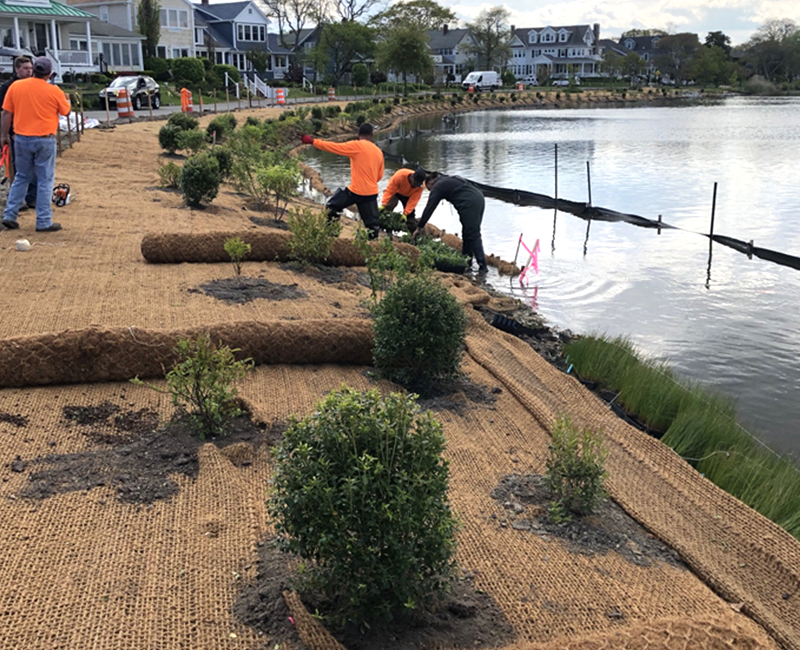


Duration:
March 2019 – July 2019
Value:
$490,000

Project elements
• 1,189 LF of shoreline stabilized and restored
• 9,283 SF of wetland plants
• 277 coastal shrubs
• 30,769 SF of pollinator meadow established
• Installation of 3 road-end & stormwater planted rock bioswales
Project Synopsis
Sylvan Lake is a 17 acre coastal lake connected to the Atlantic Ocean in the Jersey shore towns of Avon and Bradley Beach. Over decades of a highly developed watershed, the lake’s freshwater sources have shifted from natural inputs to stormwater and roadway runoff. Water quality decreased and sedimentation increased especially with the impacts of Superstorm Sandy. Tidal exchange is now cautiously controlled to safeguard against storm tides and rising sea levels. The communities realized a first step to restore Sylvan Lake would be to repair its deteriorated shorelines. Avon went first – with a grant from NJ Department of Environmental Protection and a design from Matrix New World Engineering, SumCo Eco implemented one of the earliest living shoreline projects in New Jersey. The outcome was dramatic and has spawned efforts in both communities to restore the entire lake to build on this living shorelines’ improvements for water quality, habitat and resilience.
ENVIRONMENTAL BENEFITS
